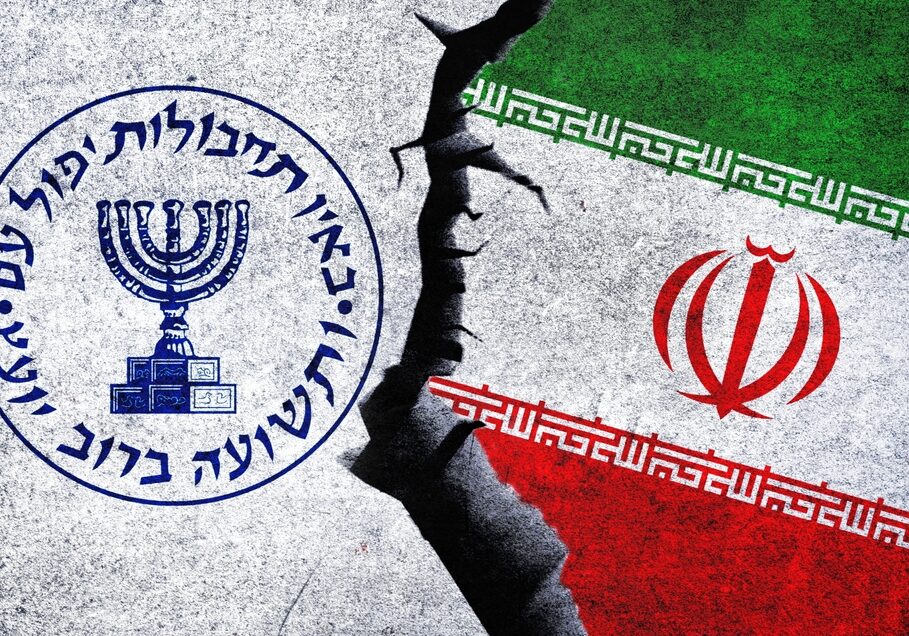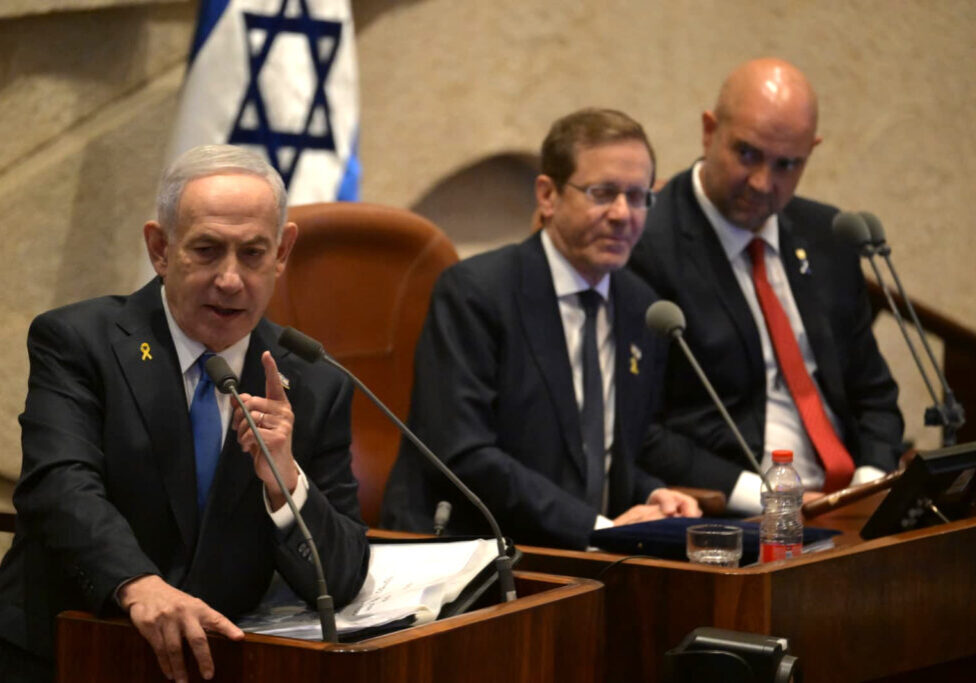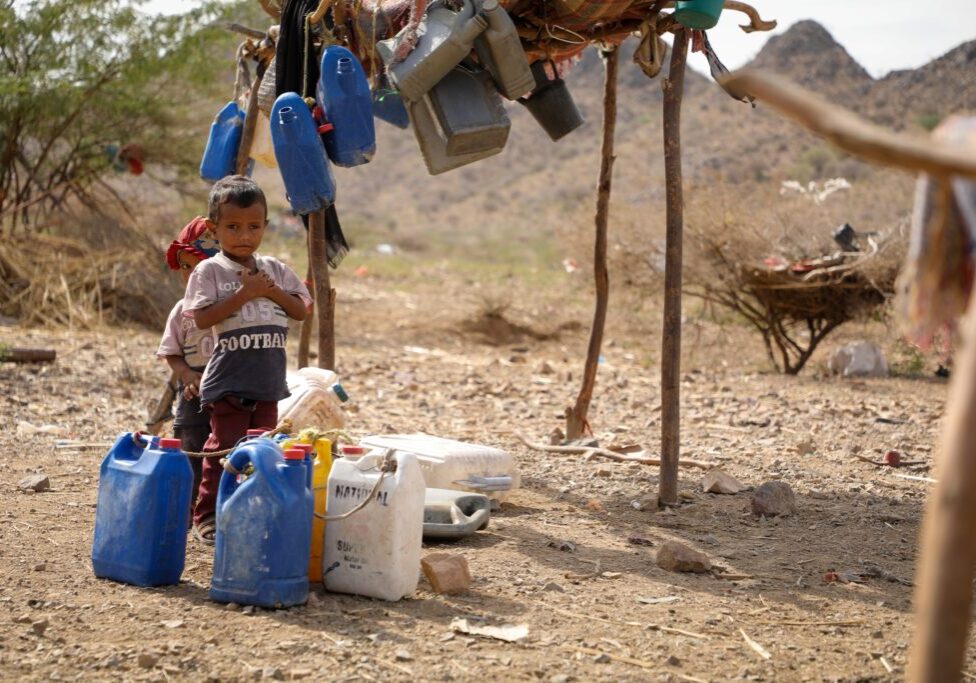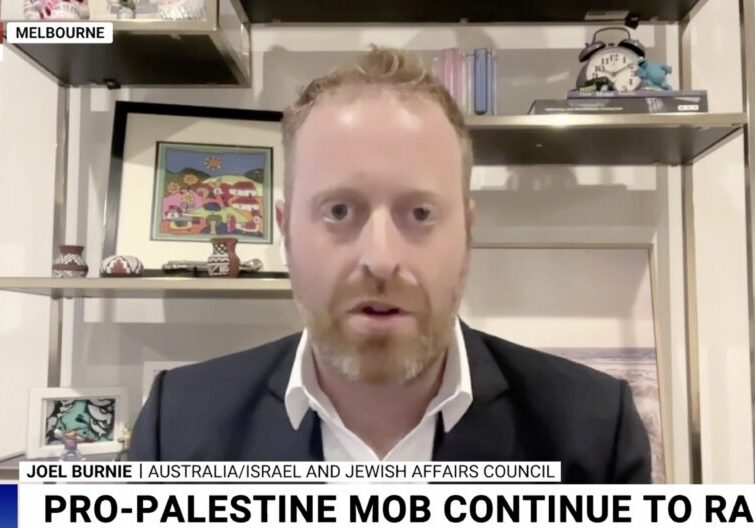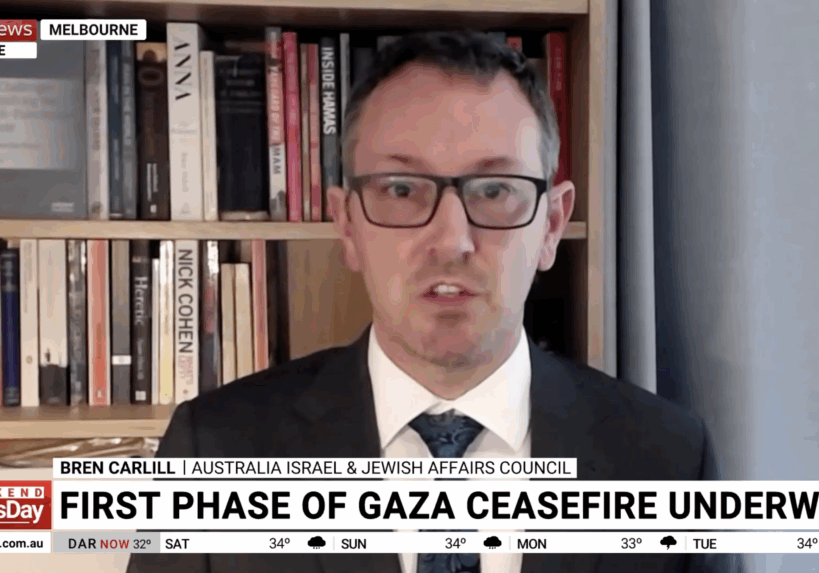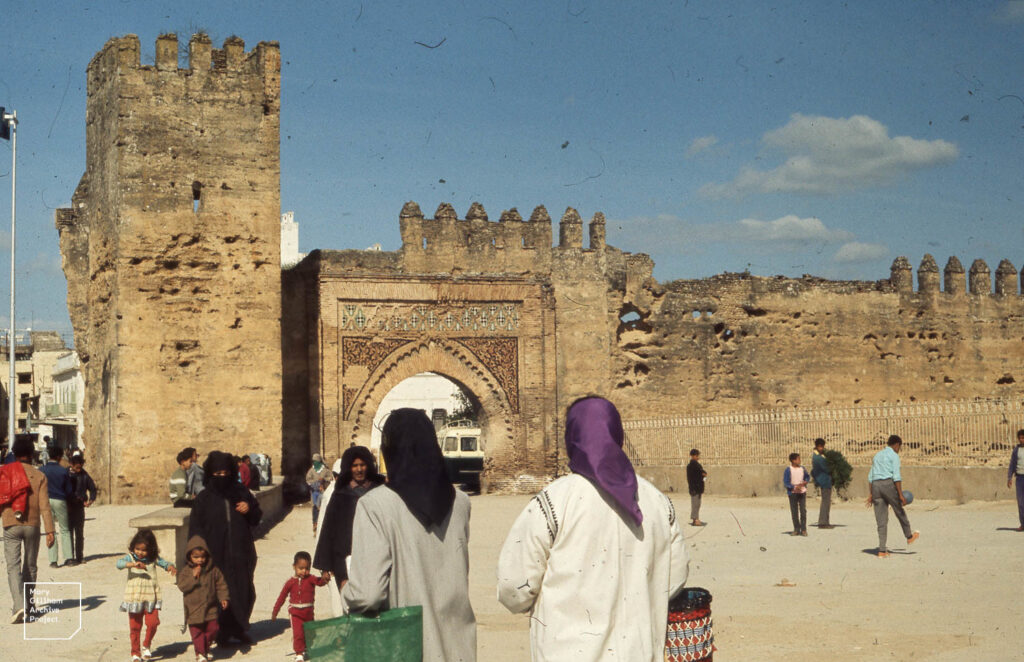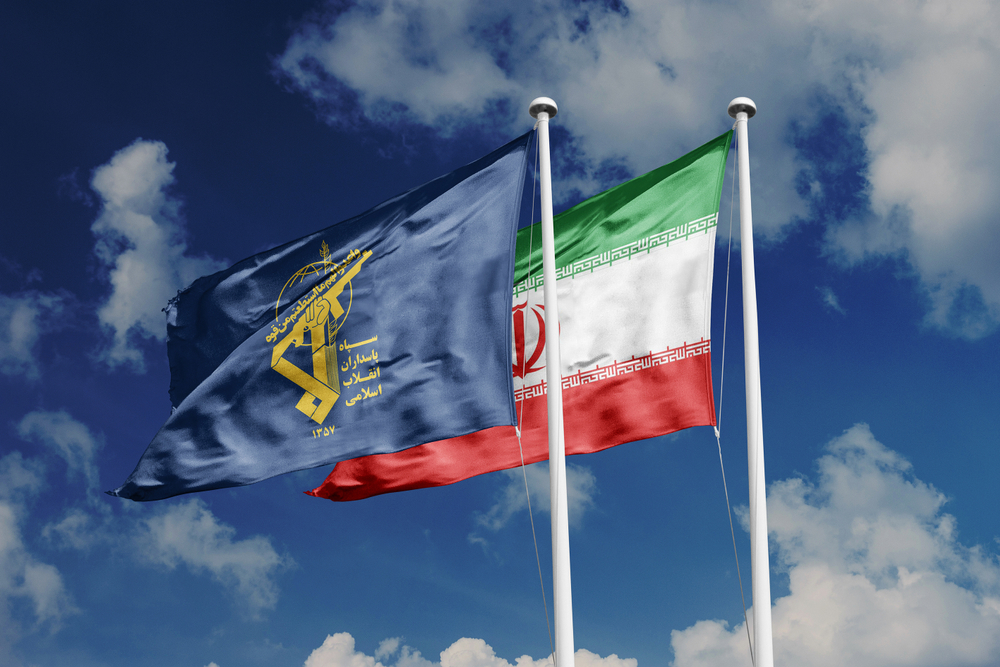FRESH AIR
UPDATES
The Age Gets Loew – a Fisking
May 11, 2017 | Gareth Narunsky

Gareth Narunsky
The Age newspaper (and the Sydney Morning Herald online) ran a “report” from anti-Zionist activist and author Antony Loewenstein on April 10 titled Ticking towards war: What will it take to change life in the Gaza Strip?
Anyone familiar with the self-described independent journalist’s prior writings on Israel and the conflict with the Palestinians (if not, you can brush up here, here and here) would already know that his work is fraught with omissions, bias and errors. And unfortunately, so it goes on.
We need not go further than the first paragraph (in fact the second sentence) to find our first omissions.
Everybody in Gaza fears another war. After the 2014 conflict, which killed 2250 Palestinians and 70 Israelis, little has changed on the ground for the territory’s 2 million residents.
The amount of context missing from this opening is staggering. Such as:
- What caused the 2014 war? It was Hamas escalating its rocket fire aimed at Israeli civilians. If there were no rockets there would not have been a war. Furthermore, on July 14, just one week into the conflict on July 14, Israel accepted an Egyptian-brokered ceasefire proposal which Hamas rejected. The war would go on for another six weeks with many more needlessly killed.
- Who were the 2250 Palestinians killed? According to this report, 936 of those killed were Hamas militants, with a further 428 casualties uncategorised. The figure of 761 civilians is no doubt a tragic and needless number, and one that should have been much lower if not for Hamas hiding its fighters and infrastructure among the civilian population, and using civilians as human shields.
- Why has little changed since? In short, Hamas has no interest in improving the lives of the population over which it rules. Far from building infrastructure and looking after the citizens of Gaza, Hamas diverts cement and other building materials meant for civilian projects to its military infrastructure and terror attack tunnels, and has allegedly been diverting international aid money into its own coffers. This is in addition to the regime’s systematic human rights violations since it violently seized totalitarian control of Gaza in 2007, such as suppressing free speech, executing citizens suspected of “collaborating” with Israel and using Palestinians as human shields.
A local psychiatrist, Khaled Dahlan, recently told me in Gaza that Palestinians had multi-generational trauma, having been dispossessed and attacked for decades. “We have had so many conflicts” in the last 70 years, he said.
Why is the conflict still ongoing after almost 70 years? Because the Palestinians, and the Arab world before them, have rejected every offer Israel has made to end it:
- The Jews accepted the 1947 partition plan which would have established two states from the outset. The Arab world rejected it and launched an all-out war intended to obliterate the new Jewish state of Israel.
- Israel tried to return Gaza and most of the West Bank to the Arab world immediately after capturing them in the Six Day War in 1967, only to be met with the infamous “three noes” from the Arab World – no peace with Israel, no recognition of Israel and no negotiations with Israel.
- Time and time again since the Oslo Accords, Israel has sought to settle the dispute once and for all. Yasser Arafat rejected offers in 2000 and 2001, Mahmoud Abbas rejected the offer in 2008 and the 2014 negotiations were shuttered before there was a chance for real progress.
- In addition, Israel withdrew completely from Gaza in 2005 so that the Palestinians could start building their state. Israel got Hamas and terror in return.
The World Health Organisation estimates that at least 20 per cent of the population has severe mental illness.
The World Health Organisation article (dated September 2014) from which this statistic is drawn actually says:
“WHO estimates that about 360,000 people – 20% of Gaza’s population – are suffering a range of mental health challenges after this summer’s conflict, according to Dyaa Saymah, the World Health Organization’s mental health officer for Gaza.”
But Loewenstein presents the figure of 20% as a current fact, neglecting to offer that this was in the wake of the 2014 war, in what appears to be a deliberate attempt to mislead the reader. Further, he adds the word “severe” himself for effect.
Israel’s military Chief of Staff, Lieutenant-General Gadi Eisenkot, explained in late March that his country reacts “disproportionately” to rocket fire from the strip. “The reality in Gaza is volatile,” he said.
Again we have missing context. Eisenkot also said in the same article – but Loewenstein fails to include – that the targets are all Hamas infrastructure.
Israel’s State Comptroller released a report on the 2014 war that found the Israeli government was uninterested in avoiding a military conflict. “There was no realistic diplomatic alternative concerning the Gaza Strip,” it stated.
Interestingly, the hyperlink above goes to a recent opinion piece on the left-leaning Ha’aretz website by Gisha spokesperson Noam Rabinovich. According to NGO Monitor, Gisha “employs ‘apartheid’ rhetoric and vocabulary based on international law and human rights to promote a partisan political and ideological agenda”. Gisha has also accused Israel ‘s military blockade of targeting civilian goods and not military supplies destined for Hamas.
Why is the source important? Because the State Comptroller’s report had many findings, a central one being that the Israeli government underestimated the Hamas tunnel threat and that Israel was unprepared and didn’t have set strategic goals for the conflict, and the decision-making was not sufficiently inclusive and careful. In fact, while researching this debunking, the only source I could find that said the report found “the Israeli government was uninterested in avoiding a military conflict” is the Ha’aretz op-ed Loewenstein chose as his source.
And as long as we’re talking about which side was uninterested in avoiding conflict, what about Hamas – which actively provoked the 2014 war with its escalation of rocket fire? It’s also hard to reach a diplomatic alternative with a proscribed terror group that’s sole purpose is your destruction, remembering that Hamas also rejected a ceasefire, which Israel accepted, one week into the war.
The same Hamas is still sworn to Israel’s destruction. Far from being not just “uninterested” in avoiding conflict, the terror group has been actively rebuilding its arsenal and digging tunnels in preparation for more conflict. The recent election of hardliner Yahya Sinwar as its Gaza chief further exacerbates this threat. Which segues us to…
Hamas recently elected a new leader in Gaza, Yahya Sinwar, who reportedly opposes reconciliation with Israel. He served 22 years in an Israeli jail before being released in a prisoner swap in 2011.
“Reportedly opposes reconciliation with Israel” is a gross understatement. According to Kobi Michael, an analyst and former head of the Palestinian Desk at Israel’s Ministry for Strategic Affairs, Sinwar “represents the most radical and extreme line of Hamas”. Loewenstein also doesn’t mention WHY Sinwar spent 22 years in prison – he was convicted in 1989 of murdering Palestinian collaborators. Sinwar is also on the US terrorism blacklist.
Tensions rose again after the alleged Israeli assassination in late March of a senior Hamas militant in Gaza.
The Ha’aretz article linked here says Hamas accused Israel of the assassination. They are the only ones to have “alleged” it was Israel’s doing. They also have zero evidence – as this article in the Jerusalem Post quotes: “The parties behind the assassination are unknown, the Hamas Interior Ministry said in a statement”.
Yet Israeli Defence Minister Avigdor Lieberman said in late 2016 that his country would help rebuild Gaza – if Hamas disarmed.
“We will be the first to invest in a port, an airport and industrial areas”, he told a Palestinian newspaper in October. Israel’s Transport Minister Israel Katz proposes building an island near Gaza to service its people – but Israel would control its air, sea and land borders.
Israel would control these borders to stop weapons getting to Hamas. If Hamas disarmed tomorrow and recognised Israel’s right to exist in peace and security, there would be no need to control these borders.
Hani Muqbel, head of the Hamas Youth Department, told me in Gaza that his group’s philosophy was different to Islamic State’s or al-Qaeda’s. “They’re destroying the image of Islam,” he said. In contrast, Hamas had built a “national liberation movement”.
Loewenstein must be hoping you don’t actually click his link and take on face value that Hamas is nothing like Islamic State or al-Qaeda, and is merely all about building a nation, you know, not bad guys at all. But follow the link and you’ll realise that not only does the article have nothing to do with Hani Muqbel, but the source it uses for the difference between Hamas and other Jihadist groups is Brigadier General Itai Brun, the research director of Israel’s military intelligence directorate!
Furthermore it states: “Whether or not the jihadi groups operating in Gaza and Sinai ‘espouse the same hatred’ as Hamas, they are not similar in their ideologies or goals … Put briefly, Muslim Brotherhood and its offshoots, including Hamas, are nationalists who seek to turn the state — sometimes democratically, often violently — toward greater adherence to Sharia and Muslim tradition. Jihadists reject the modern state altogether and seek to re-establish a medieval-style caliphate across the Middle East and eventually around the world.”
So, basically, Hamas and Islamic State may have slightly different visions of what their end-goal state is meant to look like, but both are Islamist, both espouse “the same hatred” and both use violence. Foreign policy analyst Lawrence J Haas writes that both pose a similar threat. And here’s the kicker, the two terrorist groups actually cooperate in Sinai.
He acknowledged the current difficulties in Gaza but blamed the “Israeli occupation, siege and the [rival Fatah-run] Palestinian Authority [in the West Bank]”.
It’s no surprise that a member of Hamas would absolve his own organisation of any blame. It’s also blatantly untrue. We have already discussed how Hamas has no interest in improving the lives of Gazans, preferring instead to focus on its obsession of destroying Israel. We have already discussed its diversion of civilian materials for terror-related purposes and the systematic human rights violations it commits against its own citizens.
Prior to last year’s cancelled Palestinian municipal elections, comments by former Hamas political chief Ismail Haniyeh that “life is wonderful” in Gaza prompted disgruntled Gazans to launch an anti-Hamas Twitter campaign entitled “#WhatIsWonderful?”
Additionally, some Palestinians have decided that life under Hamas is so bad, they chance fleeing into Israel, citing that they would prefer life in Israeli jails to living under Hamas.
Muqbel said that Hamas did not want another war but that its issue with Israel “wasn’t between Jews and Muslims. It’s not a religious war, it’s about land.”
He demanded that Western powers stop claiming Hamas “wanted to kill Jews because they’re Jews. We do not.“
There are a few things to unpack here. Firstly, if as Muqbel claims, Hamas doesn’t want another war, why has it been rebuilding its arsenal and digging more terror tunnels? Why did it elect in Sinwar a Gaza leader who “is considered hawkish even within Hamas” and whose election “signals the ascendance of the terror group’s military wing, the Qassam Brigades, which now holds more sway in the Strip than the political leadership”?
Secondly, Muqbel’s claim that the issue is not between Jews and Muslims and that Hamas does not want to kill “Jews because they’re Jews”. But Hamas’s own charter states such lines as:
- Preamble: “Our fight with the Jews is very extensive and very grave, and it requires all the sincere efforts.”
- Article 7: “The Prophet, Allah’s prayer and peace be upon him, says: ‘The hour of judgment shall not come until the Muslims fight the Jews and kill them, so that the Jews hide behind trees and stones, and each tree and stone will say: ‘Oh Muslim, oh servant of Allah, there is a Jew behind me, come and kill him,’ except for the Gharqad tree, for it is the tree of the Jews.’”
- Article 15: “In the face of the Jewish occupation of Palestine, it is necessary to raise the banner of jihad.”
- Article 20: “The Nazism of the Jews targeted both women and children. The terror they spread is directed at everyone. They fight people by destroying their livelihood, stealing their money and trampling their dignity.”
- Article 28: “Israel with its Jewish identity and Jewish people is challenging Islam and the Muslims.”
- Article 32: “[The Islamic Resistance Movement] is well qualified for the upcoming stage [of the struggle] with the Jews, the warmongers.”
Thirdly, Loewenstein links to a Sydney Morning Herald article, which like many published internationally, optimistically misunderstands the significance of the draft Hamas manifesto released last month. That manifesto – which references “the occupation” instead of Jews and appears to accept a Palestinian state on the 1967 borders – does not replace the Hamas charter – see Ahron Shapiro’s blog on this for the evidence. Moreover, much of it is smoke and mirrors for the purpose of PR in the Arab world and among sympathisers in the West. But make no mistake, Hamas is still sworn to Israel’s destruction and to using armed violence to achieve this and says so very explicitly in that document itself And this article argues the manifesto is unacceptable to the group’s Gaza leadership anyway.
The Israeli media largely ignores Gaza and Israelis are not legally allowed to visit. Yet former Mossad chief Tamir Pardo recently said that the occupation was the country’s only “existential threat“.
Following this link to Ha’aretz, one will find that Tamir Pardo is talking about the West Bank, not Gaza, in regard to occupation:
“Israel has one existential threat … An almost identical number of Jews and Muslims reside between the sea and the Jordan. The non-Jewish residents of Judea and Samaria live under occupation.”
Pardo refers to the fact that the conflict with the Palestinians has not been solved in general as the “existential threat”. He does mention Gaza later in the piece, and even lays responsibility for it at Israel’s feet, but acknowledges Israel’s “full withdrawal” from it. Indeed, as this article states, Pardo calls for Israel to separate itself from the Palestinians, which is exactly what the 2005 Gaza withdrawal was.
Israelis are not allowed to visit Gaza because, if they did so, they would almost certainly been kidnapped or killed by Hamas – which is today holding two Israeli civilians, Hisham al-Sayed and Avraham Mengistu who entered Gaza, apparently while in the grip of mental illness. This kidnapping was recently condemned by Human Rights Watch.
The Israeli human rights group Gisha recently found that Israel had massively reduced the ability of Gazans to leave in the last months, dropping 40 per cent compared to last year’s average. In February, only 7301 people went through the Erez checkpoint, which connects Gaza to Israel and the occupied West Bank. It was the lowest number since the end of the 2014 war.
Countless Gazans haven’t left for years. Many told me that it was impossible to plan anything major in life, such as marriage or travel, with certainty because applications to leave Gaza were routinely rejected by Israel with no reason given. Often they were ignored entirely.
The article linked to (Ha’aretz) has Gisha’s allegations and a response from the Coordinator of Government Activities in the Territories (COGAT), however the response has been omitted from this piece, giving readers only one side of the story. For the benefit of balance, here is the response:
COGAT responded that over the past two years, in number of cases Gaza residents were discovered to have “exploited their entry permits to smuggle money and weapons to Hamas members in Judea and Samaria, forged medical documents, smuggled dual-use materials, exploited international aid and more.”
“The figures do not reflect reality when every day, the [IDF’s] Coordination and Liaison Administration to the Gaza Strip coordinates over 1,000 [entries and exits to and from Israel] for purposes of trade and business, medical treatment, academic studies overseas, participation in conferences and training, and more,” said COGAT. “In urgent medical cases we immediately coordinate entry for life-saving medical treatment.”
The United Nations Commission on the Status of Women recently released a draft resolution that highlighted the status of Palestinian women. It expressed “deep concern” about the “ongoing illegal Israeli occupation and all of its manifestations”, including “incidents of domestic violence and declining health, education and living standards, including the rising incidence of trauma and the decline in psychological well-being”, especially for girls and women in Gaza.
UN Watch deconstructs the resolution here, pointing out how it “singled out Israel as the only country in the world subjected to a condemnatory resolution concerning women’s rights”. UN watch also observes that “the resolution made no mention of how Palestinian women’s rights are impacted by Hamas, the Palestinian Authority, or their patriarchal society, nor were Palestinian victims of ‘honour killings’ mentioned”, and notes that “the UN commission ended the session by ignoring the world’s major abusers of women’s rights, including Saudi Arabia, Iran, Pakistan, and many others”.
And what of the United Nations Commission on the Status of Women, which released the resolution? According to Claudia Rosett, who is widely recognized as a ground-breaking reporter on corruption at the United Nations, the commission “appears dedicated above all to promoting moral equivalence between democracies and tyrannies, between the likes of Belgium and Belarus, Israel and Iran — all of which are currently members. Though in the case of this resolution, moral equivalence would be an overly kind description. The commission evidently prefers to savage Israel while romancing the likes of Iran”. Furthermore, Saudi Arabia, probably the world’s worst country in terms of its legal restrictions of woman, was just elected to this Commission. Next.
A lawyer with the Gaza-based NGO Aisha Association for Women and Child Protection, Asma Abulehia, said that she met six to seven women every day who faced domestic abuse or economic uncertainty. However, many women couldn’t leave their houses to seek help, trapped by an abusive husband or family.
“The Israeli occupation is the main reason for these problems,” she told me. “The bad economic situation has worsened social problems, along with ignorance of Islam and unfair laws against women in Gaza.”
We would all agree that domestic violence is absolutely unacceptable. However, to blame Israel for domestic violence that goes on in Gaza is ridiculous. But don’t take our word for it, take the word of Palestinian women’s advocate Zainab Al-Ghneimi, head of the Women’s Legal Counselling Center, who told the official PA daily Al-Hayat Al-Jadida in March 2015:
“When asked for the reasons that may bring a man to act violently towards his wife, Al-Ghneimi responded that, in her opinion, there were many reasons, but that the main reason is probably that the man believes he has bought the woman and paid for her, and therefore she has become his property and must obey his orders. She clarified that unfortunately, this is the culture of the entire society, and that [Palestinian] laws give him the right of ownership, based on the man being the guardian, and he is the one who commands and prohibits.
“Married women are not forthcoming with these details about violence at the beginning, probably out of shame, and because the prevailing culture forbids discussing such secrets. This stems from the lack of a proper sexual ethics in our society.”
Significantly, the statistics from Gaza show that a high percentage of women themselves felt that domestic violence is justified on certain occasions: “41% of the women agreed that violence was justified if the woman leaves home without notifying her husband, while 74% agreed that violence was justified if she neglected her children.”
Sounds to me like Israel has nothing to do with it.
This month, Human Rights Watch released a new report, Unwilling or Unable, detailing Israeli restrictions on human rights workers entering Gaza to document breaches of human rights and international humanitarian law. It accused Israel of severely curtailing the ability of Israelis, Palestinians and internationals to enter or leave Gaza and dismissed its reasons for doing so.
Human Rights Watch asked the International Criminal Court, currently investigating possible war crimes committed in Palestine including Gaza, to determine the “credibility” of Israeli domestic investigations and its restrictions of human rights workers in and out of Gaza.
How reliable is Human Rights Watch? According to NGO Monitor, not very:
- “Its publications reflect the absence of professional standards, research methodologies, and military and legal expertise, as well as a deep-seated ideological bias against Israel.”
- “Systematic NGO Monitor analyses demonstrate that HRW disproportionately focuses on condemnations of Israel and that publications related to Israel often lack credibility. [It] promotes an agenda based solely on the Palestinian narrative of victimization and Israeli aggression.”
- “[HRW] Uses distorted legal rhetoric to regularly accuses Israel of ‘war crimes,’ ‘serious violations of international human rights and humanitarian law,’ ‘collective punishment,’ and fostering a ‘culture of impunity.’[It]applies double standards and unique standards to Israel as part of its broader delegitimization campaign.
- “[HRW] Lobbies the United Nations, the International Criminal Court, and other international frameworks, promoting false, distorted, and unverifiable allegations against Israel.”
In addition, in 2009, HRW sent a delegation to Saudi Arabia, a country with one of the world’s worst human rights records, to raise money from Saudis by pointing to the groups’ discriminatory and often demonising focus on Israel. This event clearly showed HRW’s lack of ability to be objective or fair with respect to Israel.
In a 2015 report the United Nations voiced fears that Gaza would be uninhabitable by 2020. It stated that the 2014 war had “effectively eliminated what was left of the middle class, sending almost all of the population into destitution and dependence on international humanitarian aid”.
Search the report for the word “Hamas” and you will not find it. Conversely, the word “Israel” appears 63 times. Any objective observer would think it strange that a report which deals with living conditions in Gaza does not once mention the strip’s government. Surely a territory’s government would impact the living conditions of the citizens it rules over? And as we know – and discussed earlier in this piece – Hamas does indeed have an impact on living conditions in Gaza, and not in a good way.
“Hamas doesn’t care for the people,” Abulehia said. “They deny violence against women and drug abuse [of the opioid Tramadol] even exists.”
Finally, something truthful.
Abulehia said violence against women was worsening, though there were no reliable government figures. The Safe House, funded by the Hamas government and run by women in a secure location, is the Gaza Strip’s only women’s shelter, where up to 50 people can sleep overnight. The average stay is three months.
Many women I met at the Aisha office faced troubling options. Nineteen-year-old Noura al-Reefy married her husband three years ago and wanted a divorce. Her father-in-law sexually harassed her and her husband did nothing.
“He wanted to see my husband and me have sex in front of him and me naked without my hijab,” she told me. During multiple visits to Gaza, I’d never heard such graphic accounts of abuse from a woman.
“Reefy had attempted suicide twice. She hadn’t finished high school but planned to complete her education after divorce. She was forced to marry her cousin ‘but it was a bad idea from the start. I wish it was easier for women to get divorced here.’
Buthaina Sobh, head of the Wefaq Society for Women and Child Care, told me in conservative Rafah, in the south of the territory, that sexual harassment at work, at home and on the streets was commonplace.
“In our society,” she said, “women can’t demand sexual pleasure, they’re considered a slut. Only men can. However, intellectual women now recognise that women have sexual desires and can ask for it privately.”
These are terrible stories. But as pointed out earlier, they illustrate a culture of gender inequality that is part of Palestinian society, and strongly supported by the Islamist extremists of Hamas who rule Gaza, and has nothing to do with Israel.
Sobh said the constant Israeli attacks made Palestinians “used to suffering”. She was pessimistic that women’s lives could change substantively until the siege was lifted.
“Constant Israeli attacks”? As a matter of policy, Israel only ever retaliates to attacks from Gaza – the mantra being “quiet will be met with quiet”. Even when it does retaliate, Israel specifically targets Hamas military infrastructure. It is Hamas and other Jihadist groups that initiate cross-border fire, while Hamas uses its own people as human shields.
As for “the siege” – i.e. Israel’s legal military blockade which is designed to stop weapons from reaching Hamas while still allowing civilian goods through, it is simply ridiculous to draw any link between this legitimate security measure and a culture that tolerates and promotes the mistreatment of women. Even if Hamas laid down its arms and embraced peace with Israel, and the blockade was lifted, this would not change ingrained behaviours in men who have long been conditioned to see women as property.
Training facilities for women are still rare but slowly growing. In the conservative, Bedouin area of Umm al-Nasr in the strip’s north, I visited a multi-storey centre where women learnt tailoring and toymaking for local consumption. A showroom displayed the work for sale. Carpentry classes for women were initially resisted by traditionalist men in the village, but now the teaching of skills in a territory with one of the highest unemployment rates in the world – at least 43 per cent – is being welcomed. The Hamas authority backs the centre and wants similar facilities established throughout the strip.
Toys, clothes, carpentry, Islamist extremism, rockets, terror tunnels… Hamas is diversifying!
A group of Israeli and Palestinian economists recently released two studies with the World Bank that outlined a blueprint for economic development in the West Bank, Jordan Valley and Gaza. At the launch in Jerusalem, former Israeli ambassador to South Africa Ilan Baruch was blunt.
“There has been a deliberate Israeli policy to create deficiency,” he said. “The international community has to get involved – not as a donor, but to exert pressure.”
Had some context been added here, we would read that Ilan Baruch isn’t just a former Ambassador, but that he actually resigned from the foreign ministry in protest against the Israeli government. He is a supporter of the far-left group “Save Israel – Stop the Occupation” (SISO), founded by far-Left Istaeli columnist and activist Akiva Eldar and Tel Aviv University professor Daniel Bar-Tal, “who claims that the Israeli public has been indoctrinated into supporting the ‘occupartheid.’” So this is not just a former Ambassador, but a current far-left activist whose opinions are clearly subjective and to be taken with a grain of salt.
The constant threat of war against Gaza makes normality impossible. Hypertension, deep anxiety, increasing domestic violence and insomnia are ubiquitous amongst the population.
As has been illustrated, the ONLY threat of war facing Gaza is if Hamas and other Jihadist groups initiate it. “Quiet will be met with quiet”.
With hawkish Israeli commentators demanding another war with Hamas, and advocating the assassination of its leaders within days of any conflict commencing, prospects will only improve if the international community can put concerted effort into finding a new direction.
Hawkish commentators can demand what they like in their columns. But they simply do not make decisions or dictate government policy. That is the job of the Israeli cabinet. On that note, nor do dovish commentators, of which there are many in what is a free press in robust, democratic Israel. To suggest that the international community needs to act because of the words of a bunch of columnists, who do not even represent a majority of newspaper columnist and certainly do not dictate government policy is just absurd.
Going back to the title of Loewenstein’s piece, what will it take to change life in the Gaza strip? Here’s what it will take. It will take Hamas recognising that Israel has a right to exist, renouncing terrorism and laying down its arms. It will take Hamas behaving like a government that serves its people rather than exploiting and persecuting them. It will take Hamas rebuilding civilian infrastructure and giving the people of Gaza hope instead of blaming Israel for all their ills. It will take Hamas educating the people that Jews are not their enemy.
But as long as Hamas maintains its current path of terror, the biggest losers will continue to be the people of Gaza, who deserve so much better. And that’s the real story that Anthony Loewenstein will never report because, as the major omissions and distortions in this story make clear, he is an anti-Israel activist and writes like one even while ostensibly doing “reporting”. Newspapers like the Age should take note if they value their journalistic credibility.
Tags: Israel
RELATED ARTICLES

Sentencing for antisemitic vandalism “manifestly inadequate”: Joel Burnie on Sky News

“Bittersweet” aftermath of hostage release deal: Joel Burnie on Sky News



